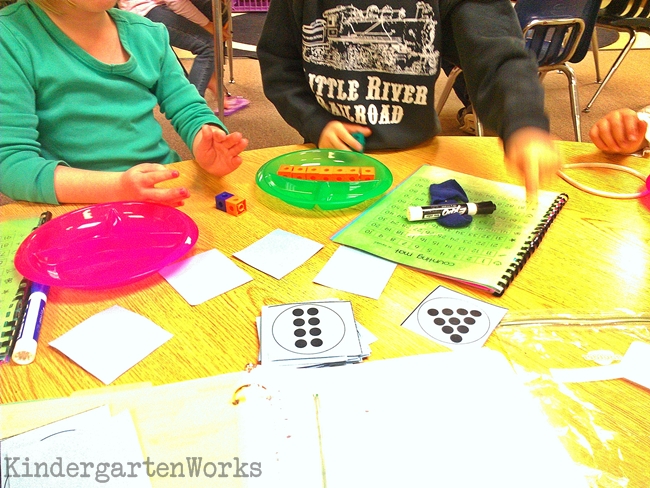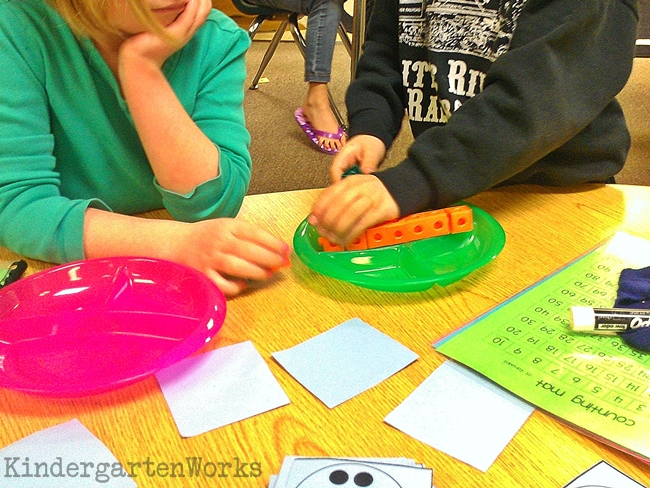Free Kindergarten Subtraction Game: What’s the Difference
Working on subtraction has been a goal of mine in teaching math to kindergartners.
This free kindergarten subtraction game “What’s the Difference?” is one example of how I’m working to teach subtraction in various ways to better meet the needs of my students.

Let me share why I’m venturing into teaching math in deeper ways and how to play this free game.
My fear of math
I’ll be the first to admit that math is not a personal strength of mine.
So when I first wanted to teach math in small groups, it scared me!
I wasn’t sure I’d have what it takes to help kinders THINK through their math when I had limited strategies of my own.
I’ve learned since starting guided math that I could develop my own strategies right alongside of my kinders and I won’t even consider going back to the boxed curriculum my school thinks I should teach.
When approaching how to teach subtraction, I literally felt as if I had no real, dig-deep strategies or tools to teach what subtraction was other than modeling simple stories with manipulatives, teaching touch-dot counting or even using a number line.
That meant I knew basic subtraction games like using a die for subtraction bump. Which, don’t get me wrong, it’s great for independent practice of routine subtraction, but not for seeing the strategies that students use and allowing for good discussion.
And I needed to see what strategies they are developing and give them opportunities to do so.
So, when I found this game online, I knew it was going to help me guide them through learning subtraction. And it did!
A happy find
I came across the Dot Card and Ten Frame Activities free resource download when I was researching Common Core standards.
I was thrilled to find this compilation of basic activities that focused on number sense.
This happy find made me feel as if I had the beginning tools to create a solid foundation with my students.
It has led to a much greater understanding for me in teaching teen numbers and numbers larger than 20 too.
If you’re considering switching to teaching math in small groups, I highly recommend plugging in these activities as your first beginning of the year lessons as you teach yourself how to lesson plan for groups.

This “What’s the Difference” game I’m sharing today came from their #9 activity listed on pg. 10.
I discovered that we like to play using the subitizing dot cards and having a number chart or number line on hand.
How to play
Using ten frames or subitizing dot cards (depending upon skill level) and counters, students can play this game in a small group or in partners.
- Spread out five cards (face down) in a semi-circle or line. Put the rest of the cards in a “draw” pile – face down.
- Students take turns turning over the top card in the draw pile and flip over one of the five spread cards. These are their two cards needed to compare for their turn.
- The student must determine “What’s the difference?” between the two cards and take that amount of counters. I like using linking cubes so they are easier to keep contained during the game.
- The card that was turned over from the spread pile (one of the five) is flipped over again for someone else to use and the card from the draw pile is discarded.
- Play continues until all of the cards from the draw pile have been used.
- The player with the most counters wins.
What we learned
But here’s why this simple “game” is so good –
You get to observe to see what strategies students are using to find the difference and to get the most counters. It’s so telling.

They will begin to remember what numbers are in the five spread card places… which makes for a great discussion.
Seriously. That’s part of this math lesson and game.
Don’t skip talking about what they are doing and how they are figuring it out during their turn.
We developed strategies by talking to each other and offering suggestions when someone felt stuck. They really began to listen to each other in how they were solving it and watched closely.
I didn’t give them any solutions, but let them really try to figure it out themselves since it’s not your typical “subtraction” situation problem.
If they felt stuck, I tried to only ask questions that would help them clarify their thinking. I’ve learned since teaching guided math that asking questions makes the biggest difference.
We had the number mats out to use a strategy tool to see how far apart the numbers were in finding the difference.
Some students tried to solve it visually, by finding the same number of dots on the larger of the two cards and then see how many more there were.
They can quickly learn to pick the card that will give them the most counters.
I mainly used this game with my most accelerated {gifted and talented, in this case, pictured above} kinders.
Let’s wrap it up
You may not have a group of higher students to use this exact game with as I described it. But you could easily use the ten frame cards, in place of the more abstract subitizing cards.
Plus, I’d definitely make sure that my kinders can subtract within 5 fluently before moving onto numbers within 10.
The number line/mats were handy to most students by the end of the lesson so I’m sure to have those handy for next time.
Hopefully, you can find it helpful too if you’re looking for ways to discuss subtraction strategies.
If you like what I do here on KindergartenWorks, then be sure to subscribe today. I look forward to sharing ideas with you weekly.






